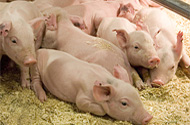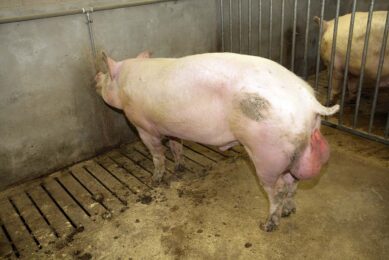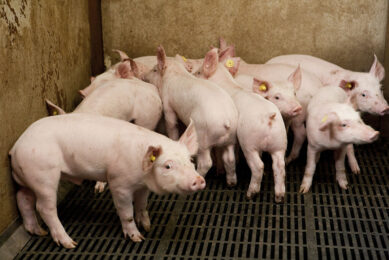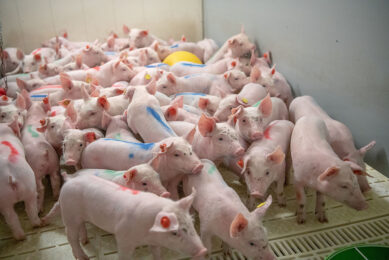Cutting out piglet castration

Castration of piglets is a piggery chore that can be spared if scientists succeed in developing genetic methods for pointing out which piglets are likely to develop boar taint.
Male piglets, consumers with a good sense of smell and pig farmers can hopefully start to anticipate good news. Scientists from the Faculty of Agricultural Sciences, Aarhus University, are investigating if a genetic method can be found to avoid castration of piglets while at the same time avoiding undesirable boar taint in pork.
©
Meat from male piglets can develop boar taint if the piglets are not castrated. It is a very undesirable smell that develops when the pork is cooked and which ruins the taste experience for the consumer.
©
However, in all likelihood, the piglet finds it pretty undesirable to be castrated. Having to castrate more or less half of all his pigs also means extra work for the farmer. The problem is how to avoid castration of piglets without ruining the Danish production of quality pork.
©
Alternative to castration wanted
– Alternative methods for castration have been investigated for years but they are unfortunately not as efficient and thoroughly tested as castration, says postdoc Henrik Hornshøj from the Department of Genetics and Biotechnology at the Faculty of Agricultural Sciences. He now hopes to alleviate the problem with a new research project that will investigate if a solution can be found via genetics.
©
– There is a large variation in boar taint among the animals. Some pigs can have a level that makes the meat inedible, says Henrik Hornshøj.
©
The scientists have found the area on the pig chromosomes that is involved in boar taint. Since development of boar taint is heritable and there is variation between pigs there is reason to hope that something can be done about the problem via breeding.
©
Genetic solution under the spotlight
Boar taint in pork is due to an accumulation of the compounds skatole and androstenone in the fat tissue. The process that regulates this is controlled by certain genes. The scientists want to investigate precisely which genes are involved and how they regulate the process.
©
– At our faculty we are at the cutting edge with regard to large scale technology for measuring the activity of genes and proteins and for managing and analysing the resulting data. Our goal with this new project is to discover if we can find genetic markers that can point out which pigs are at risk of developing boar taint, says Henrik Hornshøj.
©
If the scientists succeed at finding one or a few genes that control the development of boar taint, then it can benefit farmers and male piglets.
©
– A diagnostic tool could be developed for discovering the risk of developing boar taint and breeding methods could be developed to avoid the problem. I imagine that blood samples could be taken of all potential breeding boars, says Henrik Hornshøj.
©
– If castration becomes forbidden in the EU, then it is imperative that alternative methods be found, he points out.
©
The three-year individual postdoctorate project is supported by funds from the Danish Council for Independent Research.
©
Source: For more information contact: Postdoc Henrik Hornshøj, Department of Genetics and Biotechnology, telephone: +45 8999 1587, email: HenrikH.Jensen@agrsci.dk
©
©











